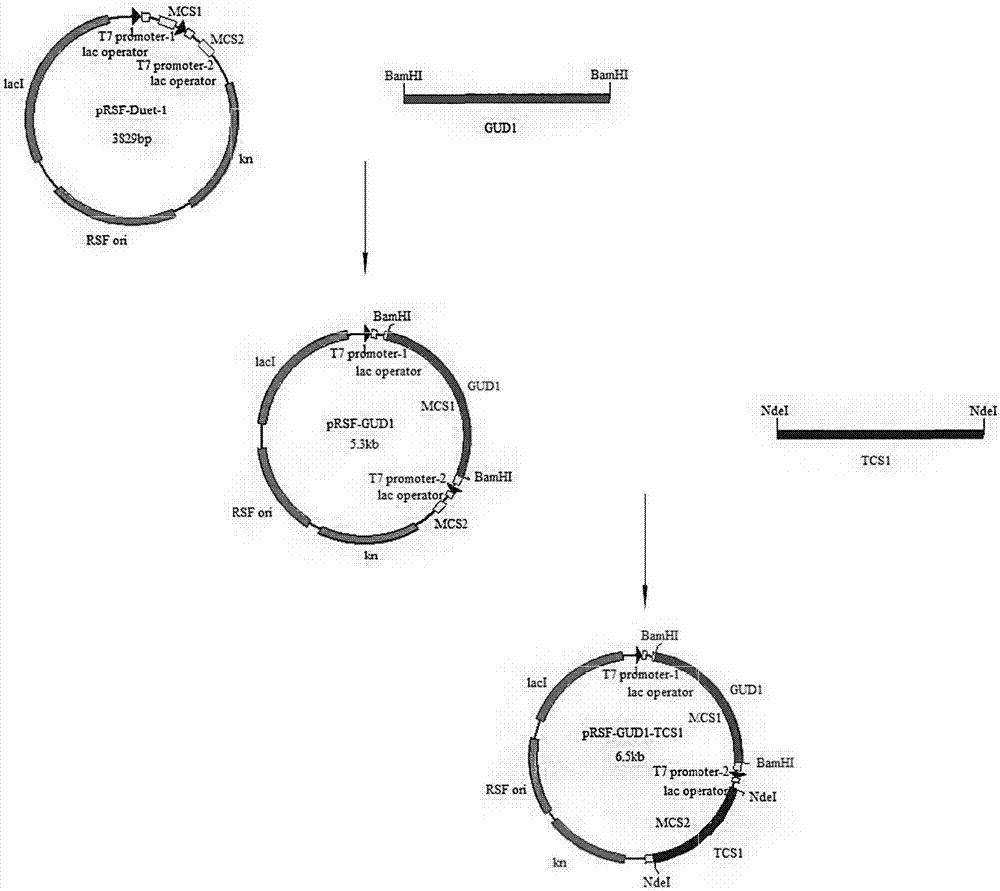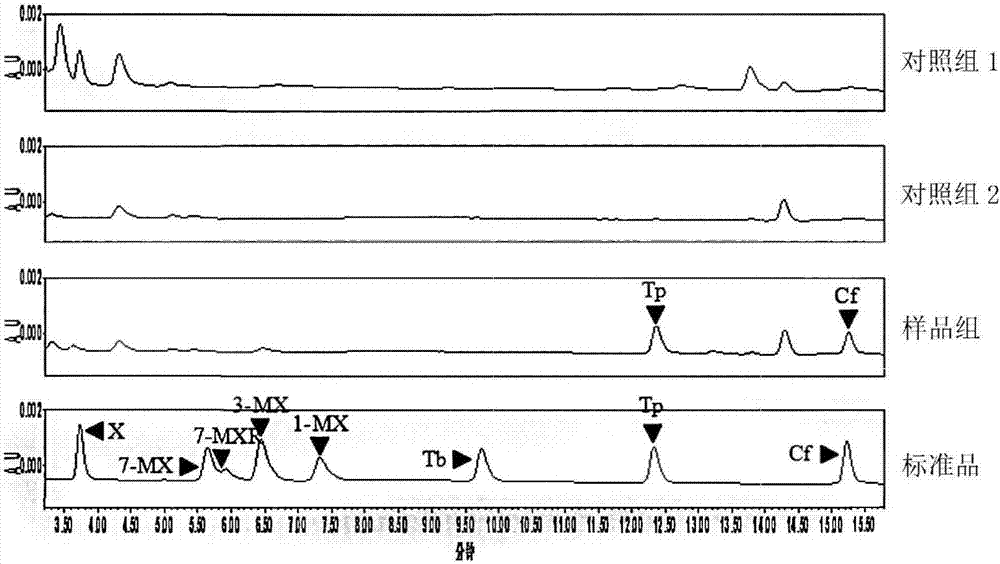Recombinant gene engineering bacteria producing theophylline and caffeine, and construction method and application of same
A technology of genetically engineered bacteria and caffeine, applied in the field of genetic engineering, can solve the problems of environmental pollution, high cost, and low extraction rate, and achieve the effect of less separation and purification steps, low cost, and high yield
- Summary
- Abstract
- Description
- Claims
- Application Information
AI Technical Summary
Problems solved by technology
Method used
Image
Examples
Embodiment 1
[0030] Example 1 Construction of Recombinant Engineering Bacteria BL21 / pRSF-TCS1-GUD1
[0031] 1. Cloning of the target gene
[0032] The complete sequences of tea tree caffeine synthase gene TCS1 and yeast guanine deaminase gene GUD1 in this example are found in GenBank accession numbers AB031280 and NC_00136, respectively. A pair of specific primers were designed according to the ORF sequences of the two target genes, and TCS1 gene and GUD1 gene were obtained by PCR amplification using tea tree cDNA and yeast genomic DNA as templates. Primer sequences (5'-3') are as follows:
[0033] TCS1-F: TAAGAAGGAGATATA CATATG ATGGAGCTAGCTACTGCGGGG
[0034] TCS1-R: CCAATTGAGATCTGC CATATG CTATCCATCAATCTTGGAAAGCAC
[0035] GUD1-F: TCATCACCACAGCCA GGATCC ATGACAAAAAAGTGATTTATTATTTGATAAATT
[0036] GUD1-R: GCCGAGCTCGAATTC GGATCC CTAAATCTGGTAGACTTGCTGGCC
[0037] Among them, in order to insert the TCS1 gene and the GUD1 gene into the expression vector, NdeI restriction sites were ...
Embodiment 2
[0044] Example 2 Fermentative production of caffeine and theophylline by recombinant engineering bacteria
[0045] 1. Preliminary culture: Pick a single colony of recombinant engineered bacteria BL21 / pRSF-GUD1-TCS1 in 3 mL of liquid LB medium, shake and culture overnight at 37° C. and 200 rpm. At the same time, in order to exclude the interference of the starting strain BL21(DE3) and the expression plasmid pRSF-Duet-1, the starting strain and the strain transformed with the expression vector without any target gene were cultured respectively as the blank control group.
[0046] 2. Expansion culture: Transfer the above-mentioned overnight cultured seed liquid into fresh LB liquid medium with 2% inoculum amount for expansion culture, the filling volume is 40mL / 150mL, and continue to shake and cultivate at 37°C and 200rpm. -3h (to OD 600 is 0.6-0.8).
[0047] 3. Induction of protein expression: Add IPTG at a final concentration of 1 mM to the bacterial solution in step (2), res...
PUM
 Login to View More
Login to View More Abstract
Description
Claims
Application Information
 Login to View More
Login to View More - R&D
- Intellectual Property
- Life Sciences
- Materials
- Tech Scout
- Unparalleled Data Quality
- Higher Quality Content
- 60% Fewer Hallucinations
Browse by: Latest US Patents, China's latest patents, Technical Efficacy Thesaurus, Application Domain, Technology Topic, Popular Technical Reports.
© 2025 PatSnap. All rights reserved.Legal|Privacy policy|Modern Slavery Act Transparency Statement|Sitemap|About US| Contact US: help@patsnap.com



